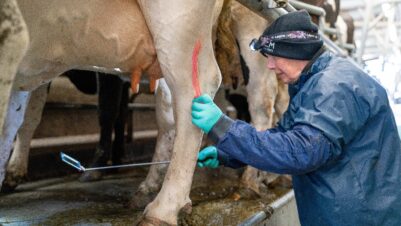“Regen ag” – the buzz phrase of the moment for those for whom food production, dietary choices and planetary health are at the top of the reading list. So, what does “regenerative agriculture” mean? I write this piece from the perspective of my veterinary specialisation in wildlife disease ecology and conservation – and of course, I can only write authentically through that lens.
Regeneration is the key word. Much of our ecosystem is degraded, partially as a consequence of our terrestrial agricultural practices. Think grass monocultures, artificial fertilisers, run-off, soil erosion, over-grazing and you get the picture. A degraded ecosystem has poor biodiversity at all trophic levels, poor conversion of sunlight energy, sub-optimal water cycling, ever-increasing reliance on inputs and ever-depleting profitability for the farmer.
How can we regenerate the system? We have a tendency to always go straight to the end-game: “Tell me what I should be doing”. But it is vital to shift our thinking away from livestock or crop production as the sole outcomes and instead look at the functionality of the ecosystem itself.
The ecosystem is many whole entities within whole entities, rather than it being a sum of parts. Every “whole” in the system – anything from a single plant cell to an entire tree, a wild bird population or a human being – has its own cycle and yet at the same time feeds into the ecosystem cycle. The beautiful and complex interaction of all these wholes forms the “web of life”. The greater the biodiversity in this systematic cycling, the more resilient and productive the system. Plant or animal products are part of the cyclicity, and as consumers of plant and/or animal products, we are very much integrated into the system – not external to it.
Regenerative agriculture is applying context-specific, non-prescriptive techniques to landscapes; the aim being to reboot the functionality, maximising the conversion of sunlight into plant energy and growth, driving the formation of deep, healthy, carbon-rich and organic-matter-rich soils, enhancing water retention, increasing the nutritional quality in both plant- and animal-derived products and promoting biodiversity all the way up the trophic levels. In a regenerative system, all living things are afforded the respect they deserve.
How might we apply these principles to UK grasslands, much of which are unsuitable for crop production? Livestock are a key tool in the box for regenerating grassland ecosystems. Any system has to pay in economic terms, but there are imaginative models which could facilitate land regeneration – an entire subject beyond the scope of this piece.
The behaviour of grazers and browsers is key in determining how well a grassland ecosystem functions. Never overgrazing individual plants or grasses and allowing them to fully recover are critical features that optimise the harvesting of sunlight energy, the cycling of minerals and water, and biodiversity both above ground in the sward and below ground in the soil. Once a regenerative cycle has been rebooted, which does take time, a grassland ecosystem can sustain itself productively without the need for external inputs.
These behaviours underpin the term “mob-grazing”, but truly regenerative agricultural practices are not just this. In fact, to think in this way will almost certainly lead to failure in terms of regeneration and productivity on the ground and thus dismissal of the entire concept. This is truly something that concerns me and why it is so important to start with the principles of regeneration before deciding on practical applications. There are no prescriptive techniques that work in the same way across all landscapes. They have to be context-specific – and decisions about actual practices have to take into account the local climate, land characteristics, the existing sward diversity, the wildlife, the current state of both the soil and the water and mineral cycles, the livestock species, breed, life-stage, and production outputs, and very importantly the people running those systems.
The term “holistic planned grazing” is more appropriate, because it inherently embodies the principles outlined here, is adapted to the context in which it is being applied and is under continuous review.
Another example of using livestock in a regenerative model is the integration of woodland into herbivore grazing systems. It is my opinion that, despite the challenges of running silvopasture systems, there are key benefits to be had in terms of livestock, wildlife, soil and ultimately human health.
This article aims to emphasise the importance of the concepts of regenerative agriculture and to try to present them in a digestible format, using a couple of examples of regenerative techniques that may be deployed in pasture-based systems. As veterinary professionals we are well-placed to educate both ourselves and others and to translate these principles into well-planned and context-specific strategies.








